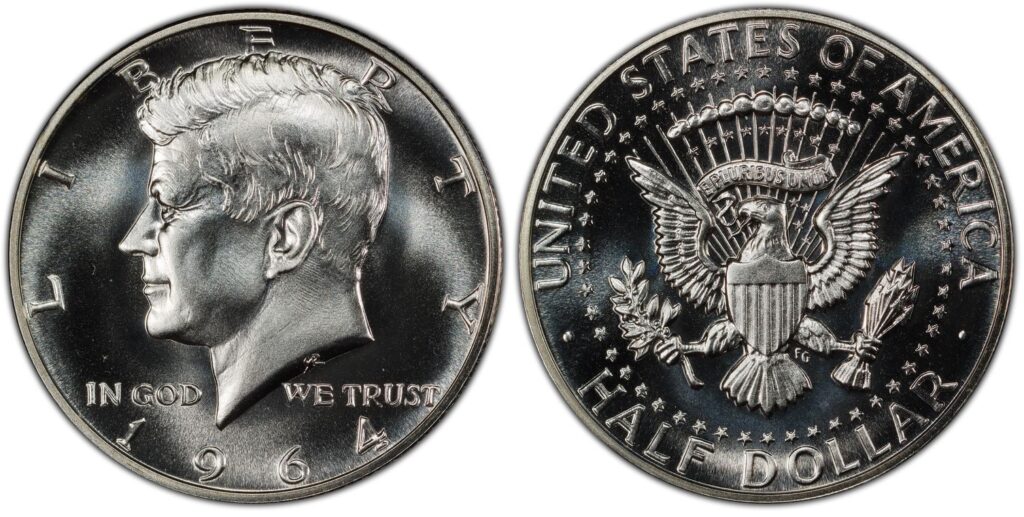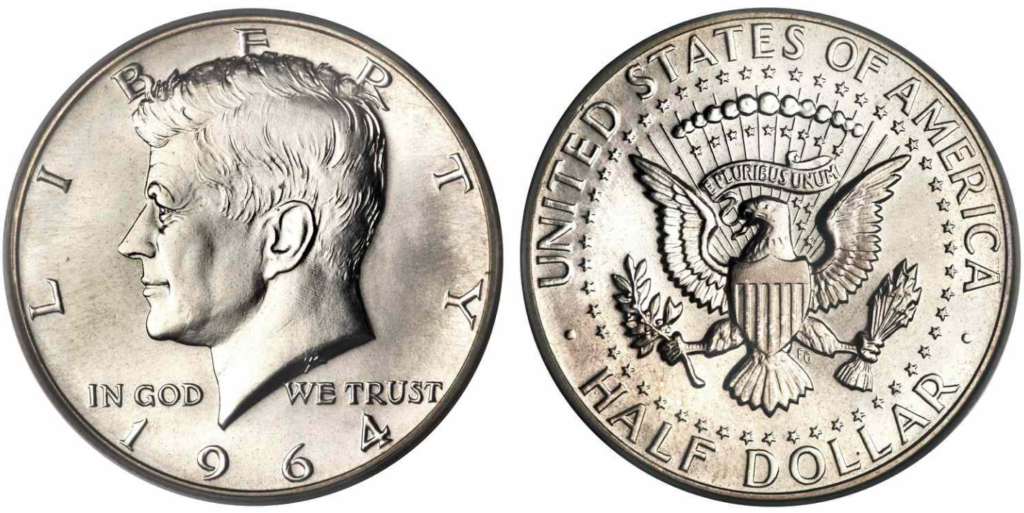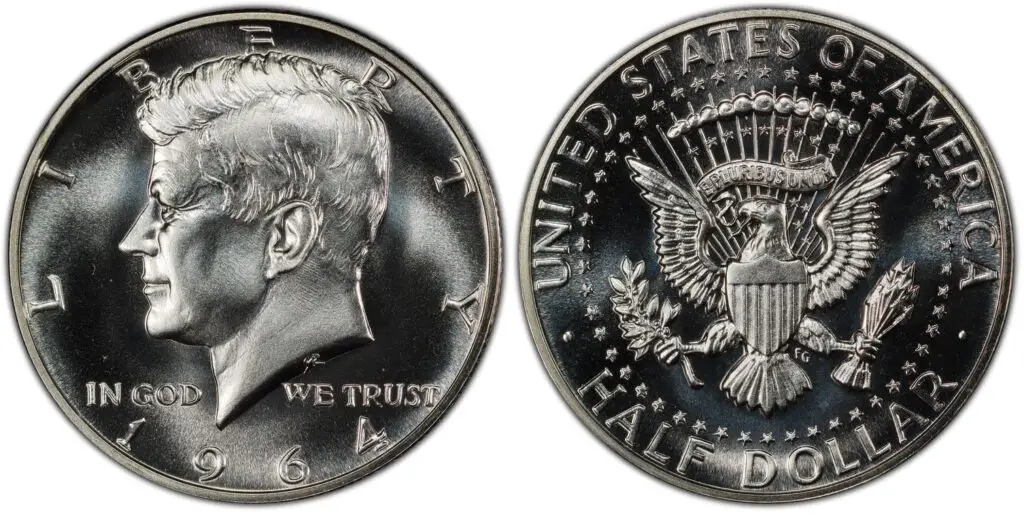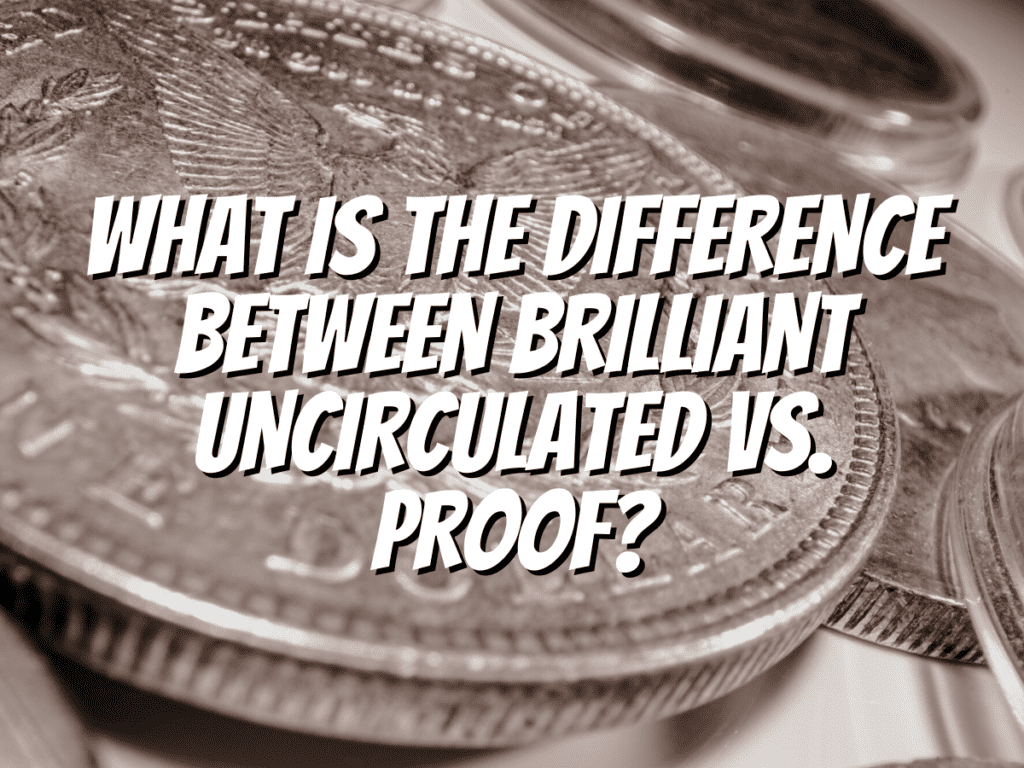What is the difference between brilliant uncirculated vs. proof? In this article, we’ll look at both coins, compare them side by side, and try to distinguish their differences!
If you’re looking for answers to their differences, you’ve come to the right place! What are we waiting for? Let’s dive right in!
What Does Brilliant Uncirculated Mean?

Brilliant Uncirculated is the term used to describe the quality that falls in the middle tier. Well, you see, Brilliant Uncirculated coins aren’t minted or struck with the same level of precision as Proof quality coins.
This is because they’re produced faster and aren’t intended for general circulation.
Coins with higher mintages aren’t that popular on the secondary market compared to Proof coins. However, they do come at a lower premium.
So, when we talk about a BU coin, we’re referring to it as MS (Mint State) nowadays.
Typically, it would be categorized as one of the lower MS grades, somewhere between MS-60 and MS-63 on the Sheldon scale.
Well, the thing is, not many dealers and collectors use the term “Brilliant Uncirculated” to determine the value of their coins because it doesn’t have a clear definition on the Sheldon seventy-point coin grading scale.
Folks, it’s important to exercise caution while purchasing coins from a dealer who employs an obscure grading term to determine the value of their coins.
Folks, let me tell you that some coin dealers out there will use these fancy words to confuse you and charge you more for your coins.
So, when you submit them to a third-party grading service, they typically come back at a lower grade than you expected.
What Does Proof Mean?

Ladies and gentlemen, a proof coin is a coin that has been struck using a distinctive and high-quality minting process. These coins are typically produced with collectors in mind.
It is worth noting that contemporary Proof coins frequently exhibit reflective fields, like a mirror and frosted devices.
Coins that were struck before the mid-twentieth century and are proof are typically identified solely by their surfaces of high quality.
It is essential to remember that whenever we use the term “Proof,” we are referring to either the type of coin or the method used in its production.
Be aware, folks, that some unscrupulous individuals out there will take a low-value coin and polish it up real nice to make it look like a high-value one.
So, they’ll attempt to pass off these modified coins as Proof coins if you’re uncertain whether a coin is a proof or you can compare it to a known proof coin from a Proof set or one in a certified holder.
You’ll quickly notice the difference between an actual proof coin and an altered coin.
Brilliant Uncirculated vs. Proof Coins
Proof and brilliant uncirculated coins are both options for collectors, but there are a few key differences between the two. First, a Brilliant Uncirculated or ‘BU’ coin is a coin that has never been in circulation.
As I’m sure you know, Brilliant Uncirculated coins are known for their exceptional brilliance and luster, which is why they’re often referred to as ‘Mint State.’
It’s worth noting that this term refers to the fact that these coins retain the same pristine condition they had when they were first minted.
These coins are struck with hand-finished and polished dies to give them a consistent shine.
Although they may not have the same level of detail and finish as Proof Coins, they are of a higher standard than Bullion and circulated coins.


On the other hand, proofs have a deeper, frosted finish that gives them a shinier appearance than their brilliant counterparts.
Usually, proof striking involves the polishing of the dies. You can usually distinguish them from normal circulation coins by their sharper rims and design and much smoother “fields” – the blank areas not part of the coin’s design.
They often treat the dies for making modern proof coins with chemicals to give certain parts of the design a frosted appearance, while the polished fields take on a mirror finish.
In the past, they have used several other methods to achieve this effect, such as sandblasting the dies and matte proofs.
The proof coins from the early 19th century may seem scratched, but fear not, for it was simply a part of the production process. I want to clarify that the term “proof” pertains to the process of making the coins and not to the coin’s condition. It is important to note that certification agencies can grade and assign numerical ratings for proof coins.
The highest grade possible for a proof coin is a PR70 coin, which means it’s a perfect example.
On the other hand, PR69 and lower grades indicate some deficiency in the strike, centering, details, or another aspect of the coin.
It is important to note that most proof coins are double-struck under higher pressure.
Normally, this process does not lead to a doubling, which is easily noticeable.
However, it does cause the devices to be struck fully, resulting in intricate details from the original die being present on the proof.
These details may not be as pronounced on circulation strikes. When struck, these coins are handled separately and individually, unlike regular coins that are simply thrown into bins.
Takeaway
As a collector, you must understand the distinction between brilliant, uncirculated, proof coins when making precious metal investments.
Well, brilliant uncirculated coins aren’t as valuable or rare as proof coins. Proof coins are much rarer than brilliant uncirculated coins and command a higher price tag than their counterparts.
Despite their higher price, proof coins only have a greater premium than other investment-grade bullion options, such as gold and silver bars.
Before you go…
So there you have it! I hope this article helped you answer your questions about the difference between a brilliant uncirculated coin and a proof coin! One final piece of advice I can give you is this; Coins are a great investment if you know what you’re investing in! Always research! With that, if you have any more suggestions about topics to cover, leave them in the comment section!
Check out my next article: “What Does AU Mean in Coins?“
Related Articles:

